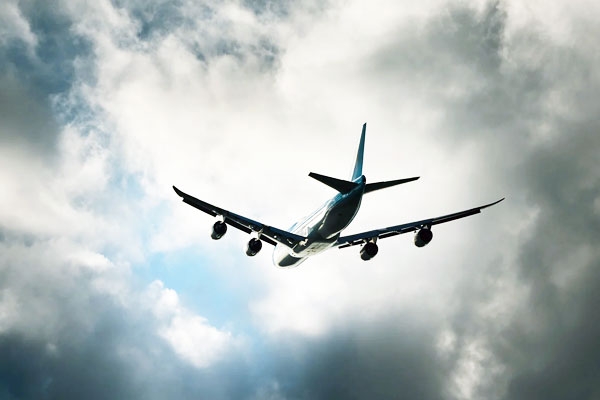
(Image source from: Canva.com)
Turbulence is one of those moments during a flight that quickly reminds even the most relaxed passengers that they are high above the earth. The cabin shakes, your stomach might feel like it's dropping, and every small noise seems louder than normal. However, even if it feels unsettling, turbulence is actually a usual aspect of flying. Pilots spend many years training to manage it, and planes are built to handle far more movement than passengers experience. Many people still question what leads to these bumps in the sky. Once you know what causes them, it is less scary. With this in mind, here is a simple and complete guide that explains why turbulence occurs, how pilots deal with it, and what you can do to stay calm during a flight.
Aircraft travel through changing layers of air. When the air becomes unstable or uneven, the plane feels the bumps. It may seem intense inside the cabin, but in flying terms, it is a normal occurrence. Grasping this concept makes it easier to understand the causes.
Here are the causes of Turbulence:
Weather Changes In The Sky: Big weather events, such as thunderstorms or thick clouds, can disturb the air in uneven ways. When a plane flies near these weather systems, it might move through areas where the air rises and falls, which creates bumps. Pilots aim to steer clear of strong storms, but smaller issues are safe to fly through. Most of the turbulence caused by changing weather is harmless, even when it sounds loud inside the plane.
Strong Winds Around Mountains: Even if a plane is flying much higher than a mountain range, the air above those mountains is not quiet. When fierce winds hit tall mountains, they bounce, swirl, and change direction, creating invisible waves of disturbed air that can rise high into the sky. Planes flying over these air waves may experience some shaking for a short time. This kind of turbulence is common in places with tall mountains, and pilots are prepared for it ahead of time.
Fast-Moving Jet Stream Air: Jet streams are narrow bands of fast-moving air that flow in the upper atmosphere. When a plane enters or crosses into a jet stream, it can feel a sudden change in speed or pressure, leading to quick bumps. These changes might feel sudden from inside the cabin, but the plane stays stable and under control. Jet streams can even help shorten flight times when used wisely.
Clear Skies With Unstable Air: Clear-air turbulence is often the most unexpected type because it happens without any signs of bad weather. It occurs when different layers of air move at different speeds, even when the sky appears clear from the window. Pilots cannot see this kind of turbulence, so they depend on weather updates from other flights and radar equipment. While it may feel sudden, clear-air turbulence is very common on long flights and is regarded as a regular part of traveling.
Turbulence From Another Aircraft: When planes, particularly the larger jets, fly, they create swirling air in their path. If another plane flies into this disturbed air, it can result in a brief, sudden jolt. This is why air traffic control ensures there is enough space between planes during take-off, landing, and cruising. Wake turbulence can be felt at times, but it usually isn't dangerous since pilots change their distance to steer clear of it.
Sudden Temperature Shifts At Altitude: The temperature at high altitudes can change unexpectedly, especially when planes move into different air masses. When warm and cool air sit next to each other, moving between them causes the air to either expand or shrink. This results in minor bumps around the plane. These temperature-related jolts are quick, normal, and something pilots are trained to handle throughout their careers.







